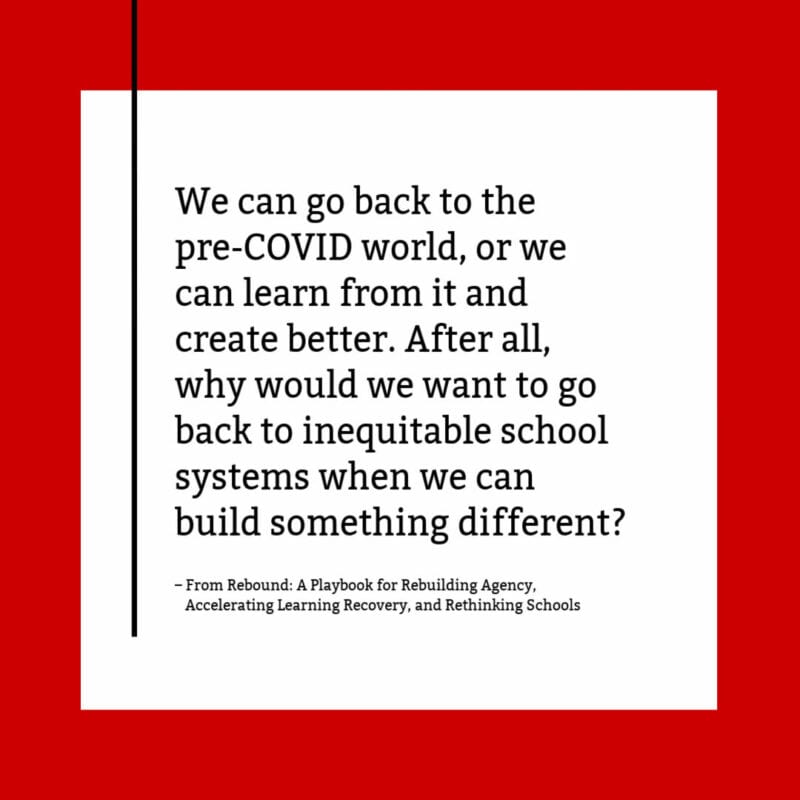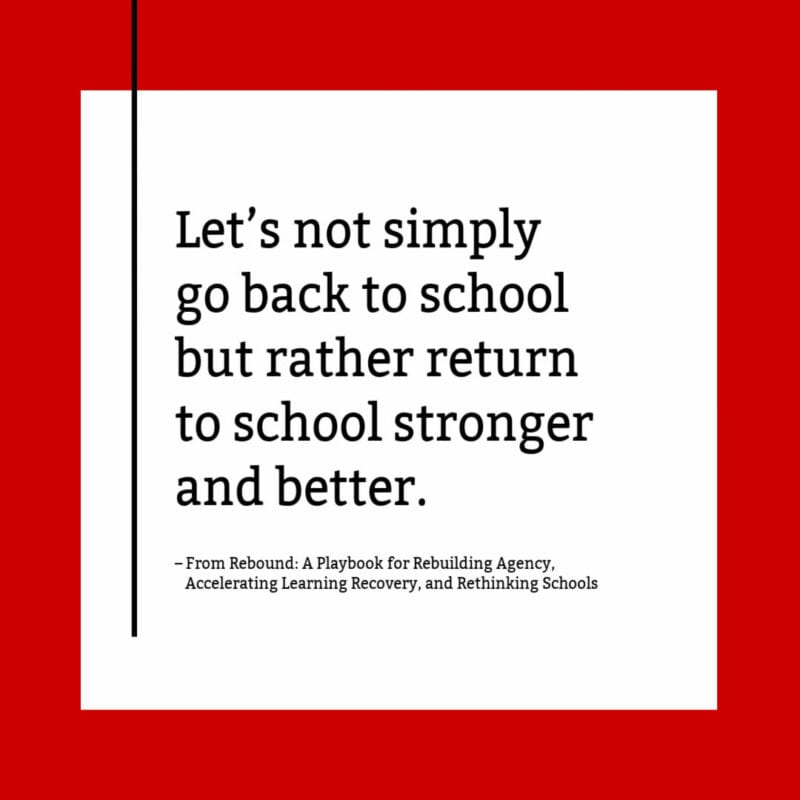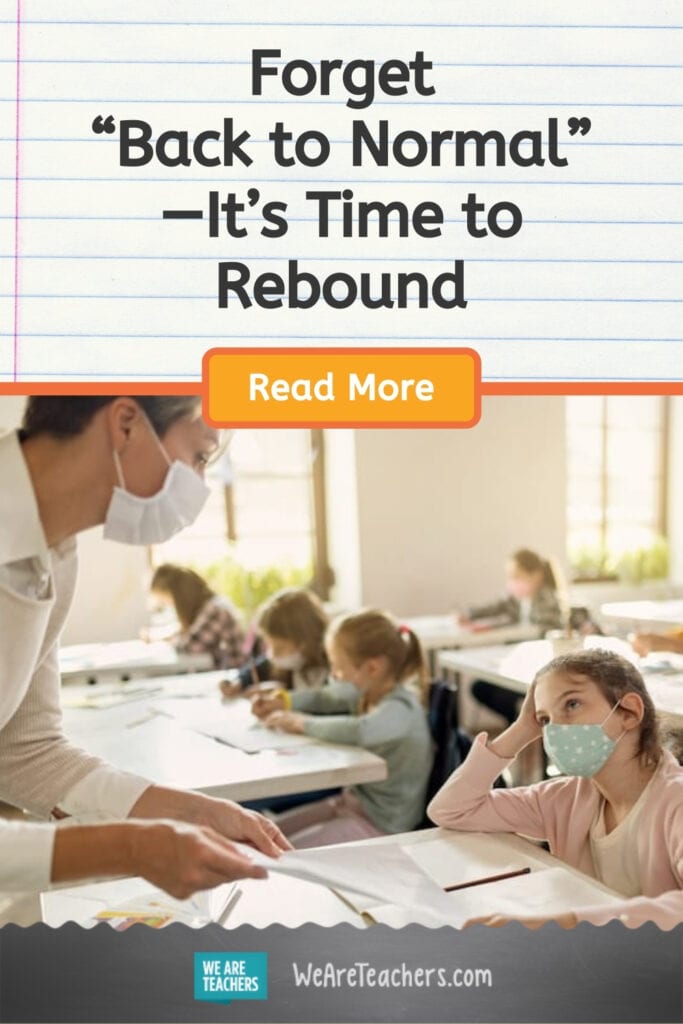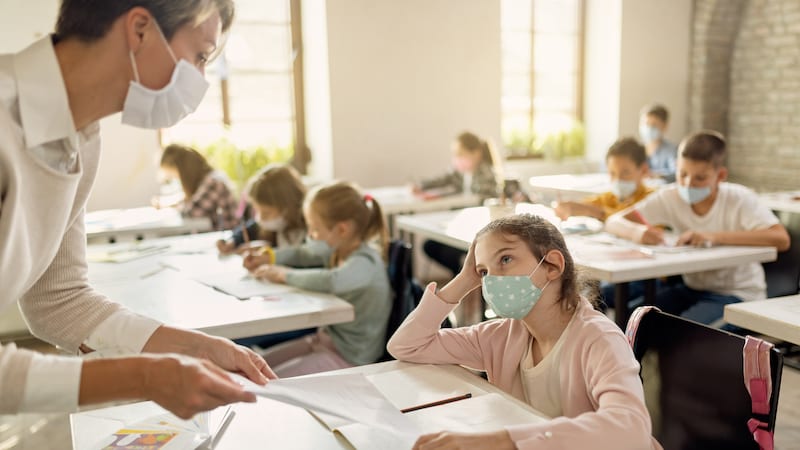The following is an excerpt from Rebound: A Playbook for Rebuilding Agency, Accelerating Learning Recovery, and Rethinking Schools, a new book by Douglas Fisher, Nancy Frey, Dominique Smith, and John Hattie. Right now, you can order the book with 25% off and free shipping using the code WAT25. There’s a version just for administrators, too, called Leading the Rebound: 20+ Must-Dos to Restart Teaching and Learning.
You have been stretched. You have been pulled. You have been through the wringer, tested, and tested again. You probably feel like a rubber band, holding it together but under a lot of tension. But the problem with the rubber band analogy is this: They either break or they go back to their former shape. Neither are good options for you, your family, or your students. We need to see and feel the excitement of learning again. We need to engage with our colleagues again. But we also need to heal from the traumatic experiences that have shaped the recent past.
It’s time to rebound.
We chose this word because it allows us to acknowledge that there will always be an impact from the experiences we’ve had. There will be a lasting effect from the time we quarantined and were isolated. There will be a lasting impact from seeing some of our students and colleagues suffer. We may have suffered. We have been changed.
But the word rebound also acknowledges that there can be increasing value and strength following a decline, setback, or adversity. There is a bounce-back notion contained within the word rebound. Rebound asks us to consider what worked well, what did not, what we need to preserve from the prequarantine, and what we need to cherish during quarantine teaching. Rebound means we can go back to the pre-COVID world, or we can learn from it and create better. After all, why would we want to go back to inequitable school systems when we can build something different? We use the term rebound in the sense of “our health is on the rebound.” That is, we can learn from pandemic teaching to come back better.

It’s too trite to say that time will heal all wounds.
These wounds are part of us now, but they don’t have to define our future.
In order to rebound, we need to address the collective experiences we have had, including those that were traumatic, and rebuild our sense of self. We need to help our students do the same. And we need to recover and reassemble our students’ learning. We can choose to see this as an opportunity to positively change schooling and learning for more students. To do so, we need to take what we have learned and create a new language of schooling. Let’s not simply go back to school but rather return to school stronger and better. Our schools are on the rebound.

How do we prepare for what is next?
We are not certain about how much learning recovery needs to be made and by whom. There are students whose performance or understanding has been compromised. Yet there are other students who performed well, even better than in their past.
The key message is do not assume—diagnose, discover, investigate the status of learning for every student. Do not assume that those who are behind are only the naughty or disruptive students, and that the advanced and gifted students performed just fine. Check with every student. And check a broad spectrum from achievement, interest and motivation, angst and loneliness, health and happiness. All are part of learning, and all could be affected (positively or negatively) by COVID at-home teaching and learning.
An educational institution stress test
Another institution that thinks a lot about capital of a different sort is the banking industry. In the aftermath of the financial crisis of 2007–2009, banks are now required to undergo periodic stress tests. Bank managers run various scenarios to see if their institution can withstand economic stress and to test its strength. Let’s do that with our schools. For the sake of argument, let’s use that same figure of missing students in the fall 2020 NWEA assessment cycle: 25 percent. Calculate the number of students in your school to determine what 25 percent means. Now use that number to assess whether you currently have adequate capital in place to serve that volume of students.

Interpret your results based on the number of items you answered as NO. This will yield a Sensitivity to Risk score.
- 0–1 Nos: You are in a strong position and are well-capitalized.
- 2–3 Nos: You are in a satisfactory position and are adequately capitalized.
- 4–5 Nos: You are in a flawed position and are undercapitalized.
- 6 Nos: You are in a critical position and are significantly undercapitalized.
Recovering learning requires more than relying on the same systems we have used in the past. We have a good indication of who is likely to need more specialized supports. We can’t afford to wait to see who might arrive at the school door and then scramble around for supports. Like a well-equipped hospital, we need systems of support to care for the academic, social and emotional, and mental health of students. To do so requires that we redirect resources to meet the specialized needs of those in jeopardy. Teachers can accomplish much with students, but they can’t do it alone. Let’s reevaluate the systems we have to support their learning recovery.
For more strategies on how to create a ‘better normal,’ check out Rebound, Grades 6-12, A Playbook For Rebuilding Agency, Accelerating Learning Recovery, and Rethinking Schools and Leading The Rebound: 20+ Must-Dos to Restart Teaching and Learning. Use code WAT25 for 25% off and free shipping.


